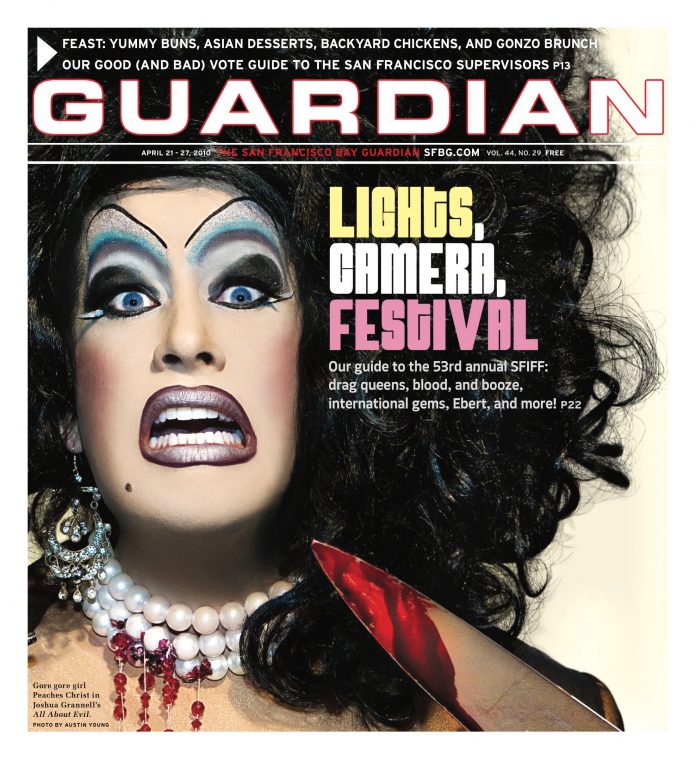johnny@sfbg.com
VISUAL ART There is no doubt that “James Castle: A Retrospective” is a treasure trove. On view at the Berkeley Art Museum, this comprehensive gathering of the self-taught artist’s many and varied works would be utterly overwhelming if its many miniature pieces and slight changes of form and approach didn’t encourage a certain freedom on the viewer’s part. In this regard it’s quite different from the recent traveling Joseph Cornell retrospective that had a stay at SFMOMA, where in a single viewing Cornell’s box constructions quickly became exhausting to engage with due to the sheer relentless volume and repetition of the presentation.
Cornell’s name is a charged one to evoke in relation to Castle, because just as one could — though perhaps few writers do — draw comparisons between the artistic themes and tactics of Cornell’s art and the art of Henry Darger, Castle also shares some traits with Cornell (and, in turn, with Darger). In the realm of Castle, it is helpful to flip the script so to speak, and see that whereas Cornell is renowned for his boxes, Castle frequently turned box material — cardboard — into imaginative open space. Of course, a certain invisible wall separates, or separated, the eccentric but successful Cornell from Darger, who toiled in near-absolute obscurity and isolation, and from Castle, a deaf man who created at home in a familial farm environment with little public recognition until late in his life.
Which brings us to the word outsider, ever-present in art-speak during Darger’s 1990s rise to posthumous cult stardom, yet curiously absent from the majority of writing about Castle. To be sure, notions of outsider art far predate Darger, even if he has become its best-known recent representative. Roger Cardinal’s book Outsider Art, first published in the U.S. in 1972, catalogs its definition of the term, with an emphasis on outré words such as madness and primitive, and a focus on violent creative forces such as Adolf Wölfli. With the coronation (however rightful) of Darger, it’s as if outsider art became cuter, with even Darger’s romantic and gender-bent view of little girls discussed in relative terms of endearment. Kid gloves, as it were — since Darger was so thorough an outsider, locked in imagination instead of literal action, he was safe.
No such illegal undercurrent runs through Castle’s work, even if, like Cornell and Darger (and a plethora of artists and other human beings today) he recreates pop images of childhood and innocence. But the measured focus of the meticulous and valuable discourse around Castle’s work — traits shared by Tom Trusky’s biography James Castle: His Life & Art; Jeffrey Wolf’s documentary of the same year, James Castle: Portrait of an Artist; and editor-writer Ann Percy’s monograph for the Castle retrospective — risks the creation of an overtly (perhaps the t should be subtracted from that last word) self-aware viewpoint. The evidence is in the flatness of the titles. If Castle is to claim a rightful place among great American 20th-century artists, here’s to future dialogue about him that allows for the same irreverence and uncensored opinion afforded those who were wined and dined and made megabucks. In addition, he could be spoken of in the same breath as talents as disparate as Darger and Wölfli in a manner that rescues outsider art from shame-based erasure.
The aforementioned o word doesn’t appear until the halfway point of James Castle: A Retrospective, which also rejects the idea of Castle as folk artist. (Interesting, since Darger’s commercial apex has occurred with New York folk museum realms.) Even then, it’s placed within conversational quote marks by the painter Terry Winters. Encouragingly, Winters later flips the notion and mentions “insider” art, a notion that probably is intended in commercial terms, but could just as easily signify those artists whose creative life has an inbuilt insularity. For now, the atmospheric and perhaps emotional darkness of so many of Castle’s soot-and-spit works is in the light, and it would be an honest mistake to view those works as cute. His books, assemblages, and drawings are as complicated as the people they render, and possess as many open doors as the houses or homes they depict.
JAMES CASTLE: A RETROSPECTIVE
Through Sun/25, $5-$8 (members and children under 12 free)
Berkeley Art Museum
2626 Bancroft, Berk.
(510)642-0808

